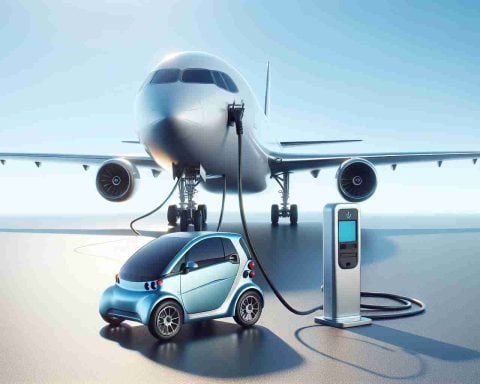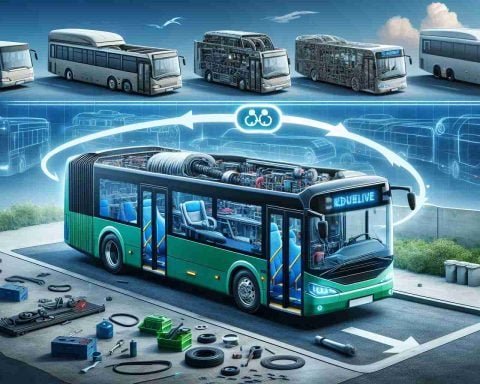- The growing popularity of e-scooters and e-bikes in New South Wales (NSW) calls for regulatory and safety measures.
- Northern Beaches Council supports integrating e-mobility into NSW’s transportation infrastructure with appropriate regulations.
- Proposed measures include speed limits of 15 km/h on footpaths and reduced speed zones near city centers and schools.
- The report emphasizes the need for education through social media campaigns and improved road signage to promote safe riding practices.
- The recommendations aim to create a balance between innovation and safety, catering to diverse riders like commuters and essential workers.
- NSW has until May 2025 to respond to the report’s recommendations, which could position it as a leader in sustainable urban mobility.
Beneath the hustle of New South Wales, a quiet revolution hums to life as e-scooters and e-bikes zip along urban pavements. Today, a pivotal report calls for swift action, aiming to harmonize safety and innovation in this rapidly growing transport frontier.
Northern Beaches Council, a staunch supporter of e-mobility advancements, celebrates the inquiry’s findings, pressing the NSW government for sweeping reforms. As these nimble devices carve out their niche across the seaside promenades, the absence of consistent regulation has left communities grappling with safety concerns.
The report delivers a compelling blueprint: integrate e-mobility into the state’s transport fabric, regulate e-scooter use, and impose thoughtful speed limits. Imagine footpaths with a gentle 15 km/h cap, where riders graciously yield to pedestrians. Imagine city centers and schools cushioned by reduced speed zones, fostering safety without stifling progress.
Riders no longer fit the stereotype of leisure seekers; they are commuters, parents, and essential workers who’ve embraced this cleaner, efficient mode of travel. They crave balanced rules that shield lives without deterring this burgeoning transport revolution.
Beyond regulation, the report underscores the urgency of education. A statewide social media campaign beckons young enthusiasts to embrace safe ride etiquette, while clearer road signage promises uniformity and understanding.
Vivid images of e-mobility’s future emerge from this report — electric-powered innovation seamlessly woven into NSW’s urban tapestry, with riders educated, aware, and empowered. As Northern Beaches nudges the state towards transformative leadership, will NSW seize the opportunity to trailblaze in e-mobility?
The clock ticks towards the state’s response, due by May 2025. If these recommendations spark action, NSW could illuminate a path for sustainable urban mobility.
The Hidden Revolution: How E-Scooters and E-Bikes Are Reshaping New South Wales
## The E-Mobility Revolution in New South Wales: A Sustainable Path Forward
The emergence of e-scooters and e-bikes in New South Wales marks a significant shift in urban transportation. As these eco-friendly modes of transport gain popularity, they present both opportunities and challenges. Here’s an exploration of the potential impacts and necessary steps for integrating e-mobility into the fabric of NSW’s transport systems.
The Global Impact of E-Mobility
While the initial report focuses on New South Wales, the e-mobility movement is gaining traction globally. Countries like the Netherlands and Denmark have long embraced cycling as a major transport mode, with extensive infrastructure supporting its safe use. The transition towards e-bikes and e-scooters represents a natural evolution, offering solutions to congestion and pollution in urban areas.
# Safety and Regulation
One of the primary concerns with e-mobility is safety. Inconsistent regulations across regions have led to confusion and potential hazards for riders and pedestrians alike. For instance, in Germany, e-scooters are integrated into their transport regulations with clear speed limits and dedicated lanes, serving as a potential model for NSW.
Technological Advancements
Advances in battery technology and design are propelling the e-mobility sector forward. Longer-lasting batteries, as seen in companies like Tesla and the innovations from Chinese tech giant Xiaomi, can influence the usability and efficiency of e-scooters and e-bikes. These technological improvements not only enhance the consumer experience but also extend the lifecycle of these devices, making them more sustainable options.
Environmental Benefits
E-mobility offers significant reductions in carbon emissions compared to traditional vehicles. A study by the European Environment Agency found that electric bicycles produce up to 90% less emissions per kilometer than cars. This transition can significantly reduce urban carbon footprints and contribute to broader climate goals.
Economic and Social Impacts
The adoption of e-mobility can lead to economic benefits, such as reduced transportation costs and decreased need for public parking spaces. Moreover, it can promote inclusivity and mobility for individuals who may not have access to traditional vehicles or public transport.
Actionable Steps for NSW
To fully harness the benefits of e-mobility, NSW can consider the following steps:
1. Consistent Regulations: Establish uniform laws across the state that dictate speed limits, helmet requirements, and designated riding zones to enhance safety.
2. Infrastructure Development: Invest in dedicated lanes and pathways for e-scooters and e-bikes to minimize conflicts with pedestrians and vehicles.
3. Public Education Campaigns: Launch educational initiatives to inform the public about safe riding practices, similar to campaigns in cities like Portland, Oregon.
4. Incentive Programs: Consider offering subsidies or incentives for individuals and businesses that adopt e-mobility solutions, echoing policies seen in Norway’s push for electric vehicles.
Broader Implications
The steps taken by NSW could set a precedent for other regions, showcasing a commitment to sustainable and innovative urban mobility solutions. By embracing e-mobility, NSW has the potential not only to transform its transportation landscape but also to lead the charge in sustainable urban development worldwide.
For more information on e-mobility advancements and regulations, you might consider visiting Transport for NSW and ABC News. These resources offer insights and updates on transportation innovations and policies.
Will NSW become a pioneering force in global e-mobility? The world is watching as we approach the crucial May 2025 deadline for the state’s response to the e-mobility report.














